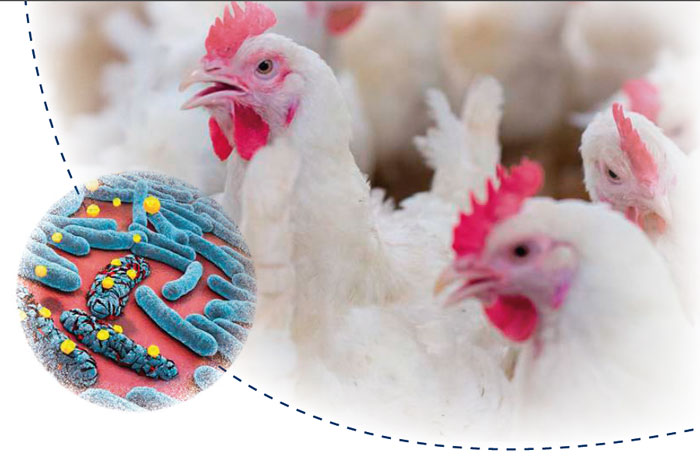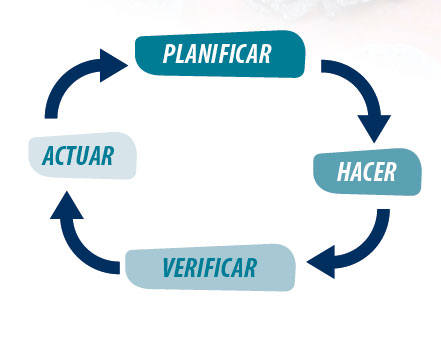RECOMMENDED

In today's society, there is great concern about antimicrobials resistance, due to its massive overuse worldwide, both in terms of humans and animals.

Currently, its use is only allowed as a therapeutic treatment and in a very restrictive way, after obtaining an accurate diagnosis, performing antibiograms and avoiding mass or metaphylactic treatments.
A holistic approach is currently being advocated in the fight against diseases in poultry farms and the reduction of the use of antibiotics. Under this concept, it is based on the combination of different strategies that allow improving the general status of the birds and, therefore, their ability to respond to external threats. They include, among others, the implementation of vaccine prophylaxis programs, nutritional strategies (administration of prebiotics, probiotics, organic acids or incorporation of essential oils), and the application of management programs to improve the welfare of birds. Under this vision, biosecurity management plays a crucial role.
Biosecurity plays a fundamental and indispensable tool in reducing the use of antibiotics in animal production.

The concept of biosecurity and the measures to be applied in livestock facilities have been developing for years in the sector. We know in depth the actions that we can take on our farms to minimize the potential threats that can compromise the health, performance and well-being of our birds.
Even so, we continue to see facilities, including those for breeding hens, having major deficiencies in this regard, both structurally and operationally, which makes things harder to prevent the entry and spread of pathogens in the flock. The magnitude of the negative impact will be variable depending on the infectious agent that affects the farm in question, but it will always exist, being able to affect several farms in an extreme case and having a global impact at the sector level.

If the question is "how to treat our birds when their health is compromised by the entry of a pathogen", the answer seems clear, we must put up barriers to prevent their entry. Biosecurity is one more factor in a farm's management and cannot be forgotten, in fact, it is the most important factor. For this reason, it is crucial that a farm has a curomized biosecurity program and that it's maintained, followed and reviewed periodically.
The biosecurity program must cover all possible points of entry and spread of diseases in the facility, therefore we must control the aspects detailed in the following table:

Table 1. Basic control points in the installation.
THE PLANNING
As in any other important area that we have to control, we must first carry out a situational diagnosis of our farm .
The implementation of biosecurity measures must be guaranteed in a systematic and continuous way by all members of the team, so it is not acceptable to have a defined protocol without ensuring that it is also applied correctly. It is therefore essential to monitor and control the measures implemented.
It is not strange to visit a farm in which different structural biosecurity measures are available, such as the perimeter fence, but which are not well maintained and therefore do not fulfill their function at all. In this sense, it is important to highlight that biosecurity is based on people and structural measures help, but they do not constitute anything in themselves if they are not used properly. The clearest example of the above, are showers. The presence of changing rooms and showers constitute an important measure of structural biosecurity in our farms, but mean nothing if they are not used. Therefore, something that must be included in any biosecurity program is the training for personnel. For biosecurity measures to give the expected result, we must invest in the people.
The personnel in contact with the farm must know and understand in depth the concepts of biosecurity and the basis of sanitary control on the farm. It is important to emphasize the repercussions that deficiencies can have in this regard. The organization of training and review sessions with the staff is a useful tool to promote this involvement.
EVALUATION
As in any system that we want to control, an evaluation method will be necessary that allows us to know its state. In this case, to know if we have a sufficiently solid biosecurity system, or if we have deficiencies that must be corrected. For the evaluation of the system, we can use audit forms that will allow us to evaluate all the points and carry out a follow-up. It is important that these forms include all the areas to be evaluated, such as:
Depending on the results obtained during the evaluation, it will be necessary to apply corrective measures within a defined period that will allow correcting the deficiencies detected and continuous improvement. The frequency of evaluation will depend on the specific cases of each farm, but it is recommended to carry them out at least once in each flock.

The correct management of biosecurity in our farms is essential in guaranteeing our flocks' health and, consequently, reducing antibiotic use. This will also contribute to an improvement in animal welfare, to the reduction of exploitation costs and will have a general positive impact on human and animal health. We will achieve good control of Biosecurity by managing it through the definition of specific programs, documented procedures, and periodic reviews and evaluations.
All this will allow the creation of a dynamic system, through the application of the principles of the Deming cycle, and its continuous improvement.
Finally, we must emphasize that it is essential to invest in the training of personnel to achieve good involvement, the continuous application of the defined measures and obtain the benefits of the system.
Subscribe now to the poultry technical magazine